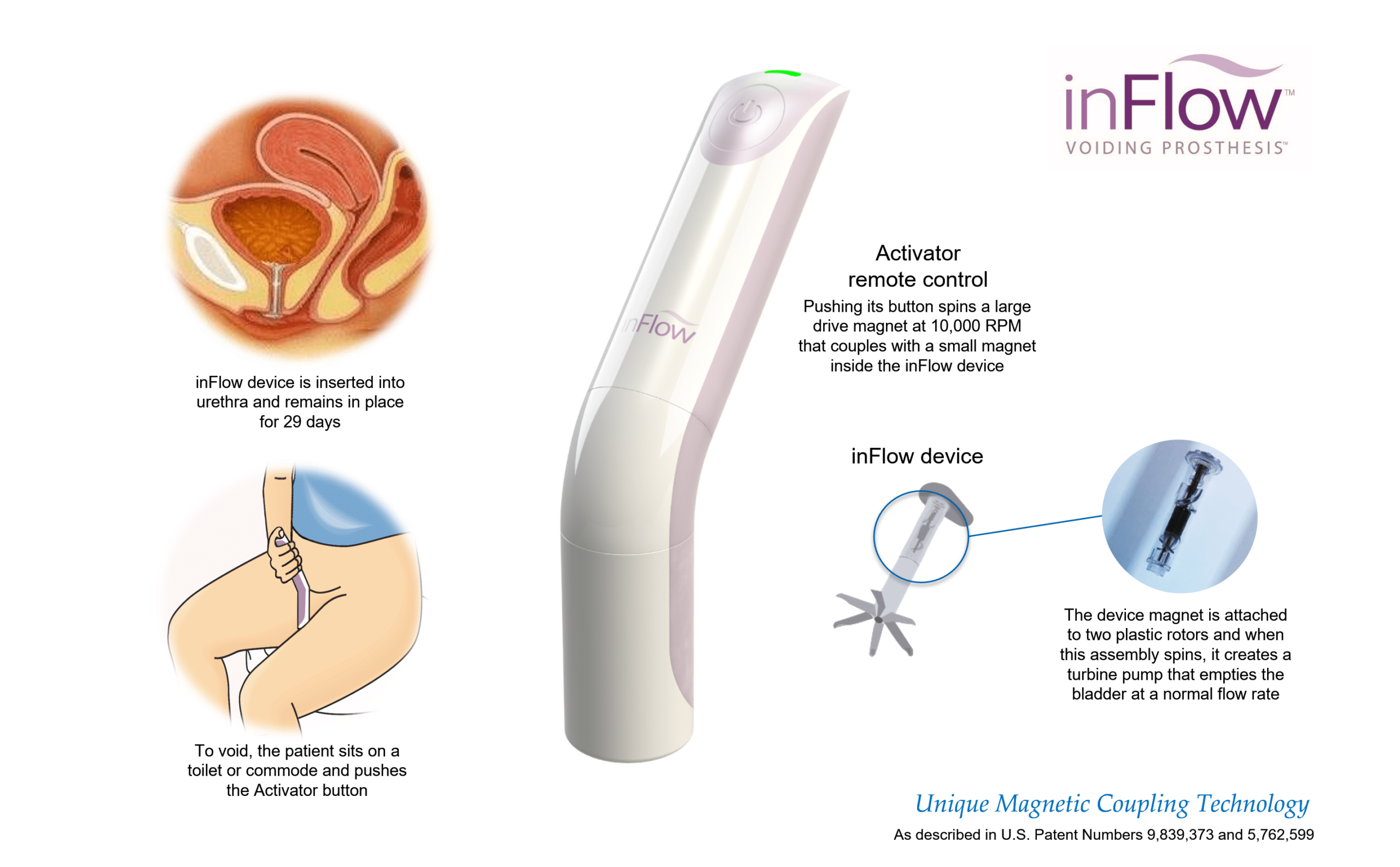The inFlow device is an entirely new approach to an age-old problem – how do you get urine out of the bladder without causing infection?
Historically, bladder emptying has been done with urinary catheters. Urinary catheters are thought to have been invented in ancient Egypt, about 3500 years ago. The Egyptians used river reeds and arguably, the only significant improvement since then has been the use of different materials. Importantly, catheter-associated urinary tract infection (CA-UTI) remains an unsolved problem. Most recent efforts to mitigate CA-UTI have used antimicrobial coatings intended to retard the growth of biofilms on the catheter surface. However, it is fair to say that to date this approach has not resulted in clinically significant improvement.
New approaches to bladder emptying have long been needed and in considering these approaches it can be useful to start by studying normal function. So how does the body normally protect itself from UTIs and how does a catheter interfere with this protection? Among other things, good bladder health requires three voiding-related functions: 1) periodic, 2) forceful and 3) complete evacuation of urine.
The inFlow device uses advanced magnetic coupling technology to maintain all of these key functions:

Unlike catheters, which are tubes that passively drain urine, the inFlow actively empties the bladder. Catheterizing vs. using inFlow device is comparable to the difference between IV feeding and eating – both supply nutrition, but they do it quite differently. How things are done has significance and relying on a catheter to void as opposed to using a toilet has profound psychological significance to any adult.
As a “true” prosthetic device, the inFlow is intended to normalize voiding to the greatest degree possible. Its internal pump compensates for the inability of women with neurologically impaired bladder function to generate bladder pressure by providing forceful, virtually complete evacuation of urine on demand, allowing almost normal use of a toilet or commode.


